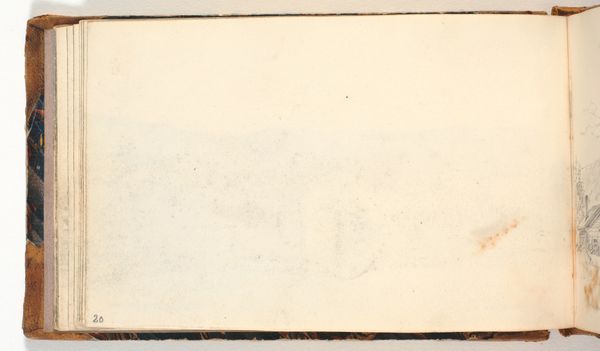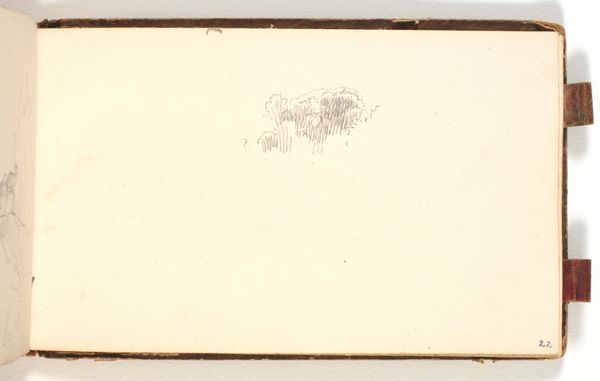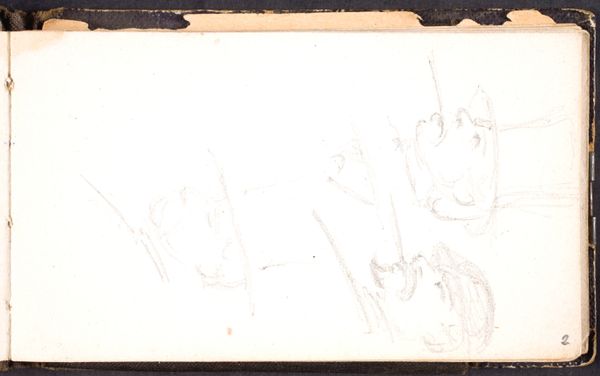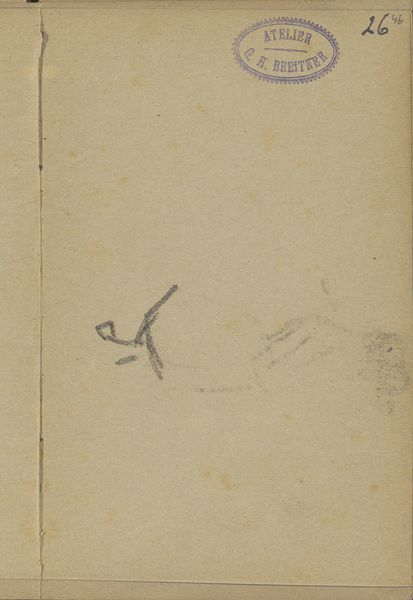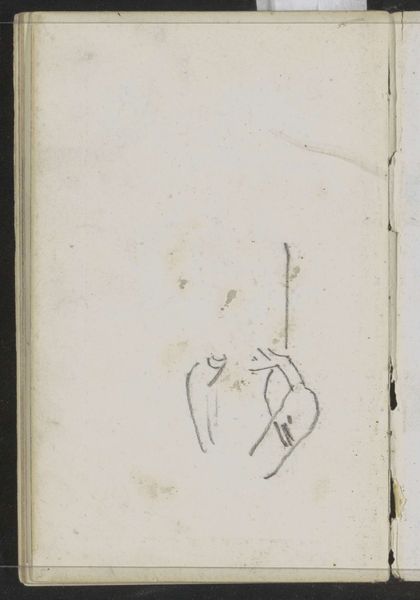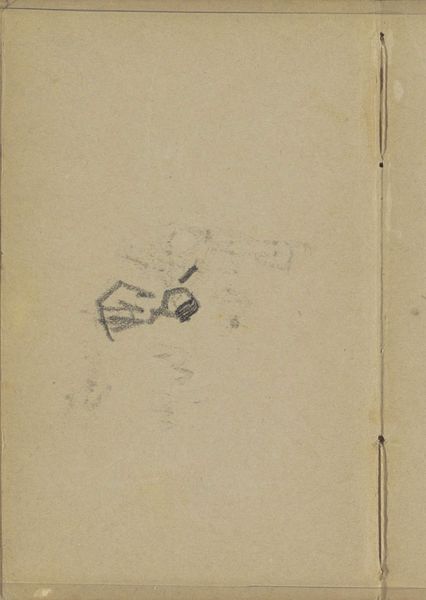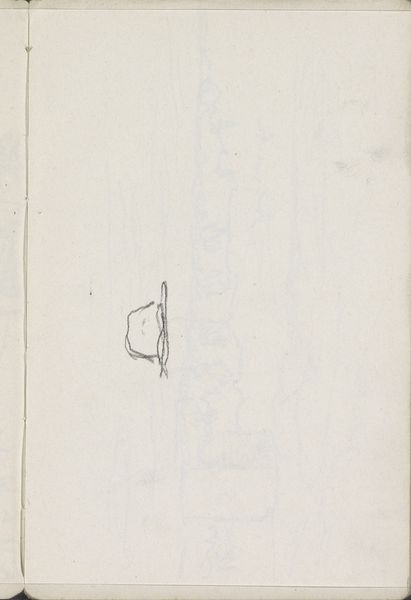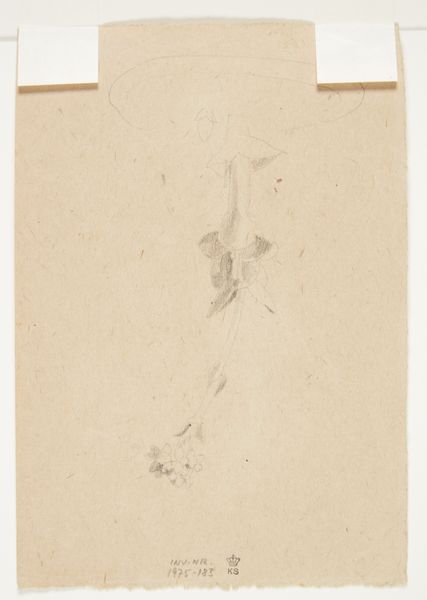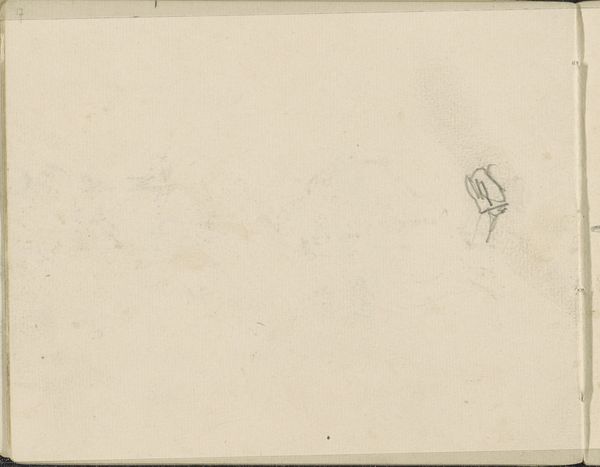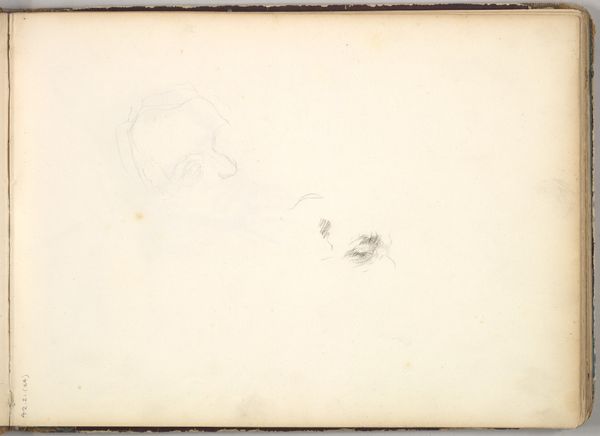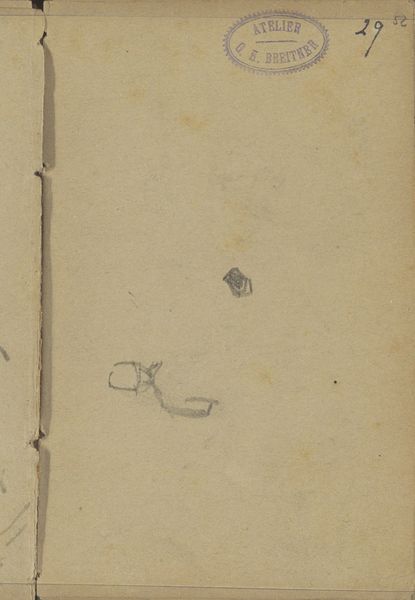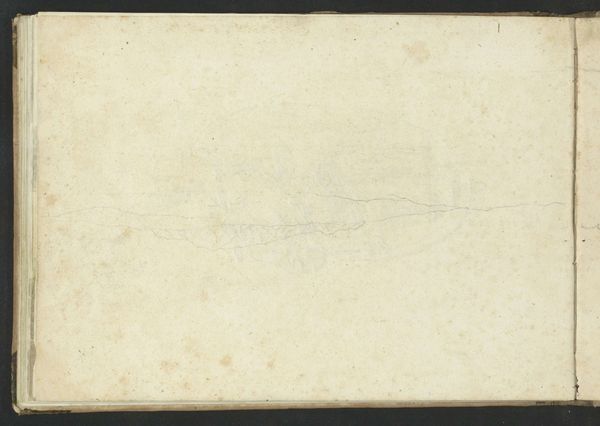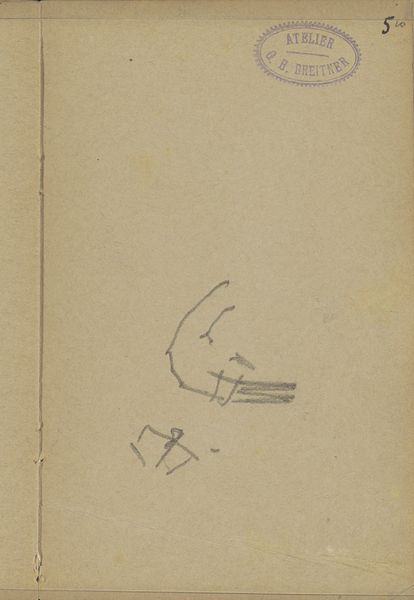
drawing, paper, pencil
#
drawing
#
landscape
#
paper
#
coloured pencil
#
pencil
#
line
Dimensions: 108 mm (height) x 177 mm (width) (bladmaal)
Editor: This is "Rids af hestehoved," or "Ride of the Horse Head," by P.C. Skovgaard, created sometime between 1848 and 1851. It appears to be a drawing on paper using pencil and colored pencil. There’s a delicacy to the lines… it feels like a fleeting impression. What do you see in this sketch? Curator: Immediately, I notice the fragmentation. It’s not a complete horse, just the head, severed and yet still possessing a sense of movement, of a 'ride' as the title suggests. In many cultures, the horse is a powerful symbol of vitality, strength, even nobility. Does severing the head rob it of its power or transform it into something else entirely? Editor: That's fascinating! I hadn’t thought about the impact of the fragmented form. It feels a little unsettling now. Is the way the artist depicts only the horse head intentionally symbolic? Curator: I believe so. Consider the potential cultural context: Skovgaard was painting during a period of intense national romanticism in Denmark. The horse could represent a romanticized, perhaps even idealized, past. Displaying only its head may then convey not a present reality, but the fractured or incomplete relationship with this symbolic past. Editor: So the sketch invites reflection, beyond the simple depiction? Curator: Precisely. The fragmented form invites consideration on the viewer's part. It demands you complete the narrative, bringing your own understanding of Danish history and culture to bear on this seemingly simple drawing. The 'ride' now seems less physical, more of a mental journey, doesn’t it? Editor: It does! The incomplete image creates a deeper level of meaning that ties directly to a sense of history and cultural understanding. Curator: And the way the drawing feels more spontaneous adds another layer of interest to what the artist might have felt. A great way to start an audio guide, looking beyond the immediate imagery. Editor: Agreed. Thanks for enlightening me. I’m going to approach sketches very differently from now on.
Comments
No comments
Be the first to comment and join the conversation on the ultimate creative platform.
